Welcome back to our blog series 'Songs of the Spinnies', all about the birdsongs and calls you can hear at the Spinnies Aberogwen Nature Reserve. We invite you back into the Main Hide (Prif guddfan), also known as the Sea Hide, to look out into the lagoon and listen to all the songbirds you may hear during your stay. Some of the shorebirds we told you all about in the last blog can also be spotted over the lagoons, enjoying some respite from hunting for food across from the shore.
Songs of the Spinnies - Part 2: The Main Hide
Spinnies Aberogwen Nature Reserve's lagoon @ Eirlys Edwards-Behi
The Main Hide – The Lagoon View
Just by the feeders, you often see many of the small birds such as tits, such as the blue tits, great tits, siskins, goldfinches, bullfinches, and chaffinches.
The blue tit song sounds like a “sispi si-hi-hi-hi-hi”, while the great tit song has notes kind of see-sawed with each other, which others have dubbed it sounding like “teacher, teacher, teacher”.
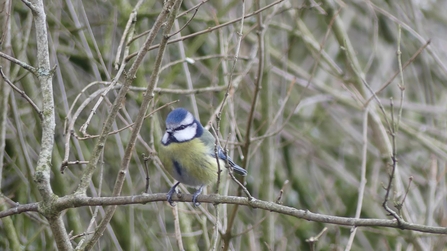
Bluetit/Titw Tomos las @ NWWT Daniel Vickers
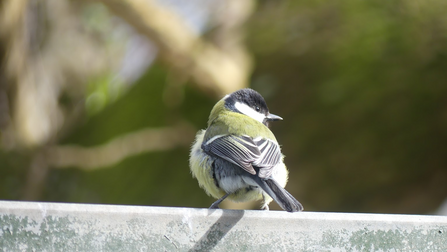
Great tit/Titw mawr @ NWWT Daniel Vickers
The siskin song is a mixture of trills and twittering sounds, mixed with whistled “tsy-zee” and hoarse “putt” sounds.
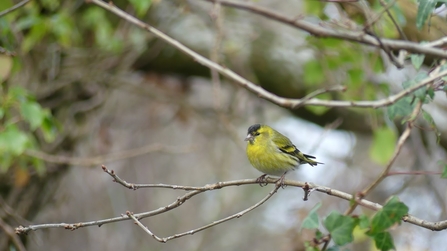
Siskin/Pila gwyrdd @ NWWT Daniel Vickers
The goldfinch song is mixed with call noted and trills, with chattering sounds and sounds that go “skip-i-lip” and “tschair”. The bullfinch makes a low “Pew” or “Phiu” sound, sometimes as a singular note and sometimes in sucession, like a “pew-pew-pew”. The chaffinch song is a “chip-chip, chirichiri, cheep-tcheweeoo” which is intercepted by tweets and “chup” sounds.
It seems that often, the goldfinches will squabble with the other birds over their preferred feeder, so you will definitely hear them the most when sitting close to the feeders.
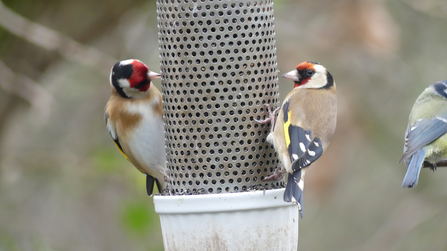
Two goldfinches/Dau nico @ NWWT Daniel Vickers
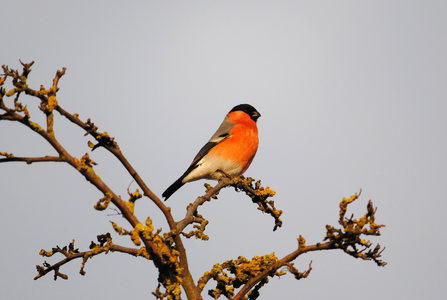
Bullfinch/Coch y berllan @ Amy Lewis
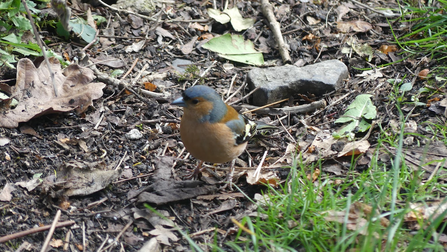
Chaffinch/Ji-binc @ NWWT Daniel Vickers
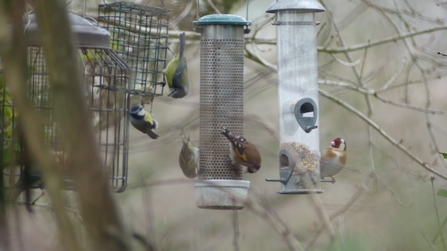
The Main Hide's Bird Feeders/Teclynnau Bwydo Adar y Brif Guddfan @ NWWT Daniel Vickers
Over the lagoon, you can sometimes spot the great spotted woodpecker in the trees. The great spotted woodpecker makes a rather loud high “Tic!” sound and may also make a rattling noise when alarmed. They will also make the quick pecking on wood sound, called drumming, that most people will associate with woodpeckers, which they do for numerous behaviours, such as feeding, communication and for creating nests in the spring.
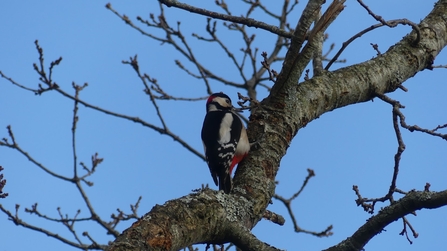
Great Spotted Woodpecker/Llun o gnocell fraith fwyaf @ NWWT Daniel Vickers
The shorebirds, such as the little egrets and grey heron can also be seen across the lagoon, often during high tide, and rest on the small islands and land around the lagoon.

The Spinnies Aberogwen Lagoon/Môr-lyn Spinnies Aberogwen @ NWWT Staff
In the next part of the series, we will discuss the Kingfisher Hide.
PREVIOUS: Song of the Spinnies Part 1 NEXT: Song of the Spinnies Part 3



